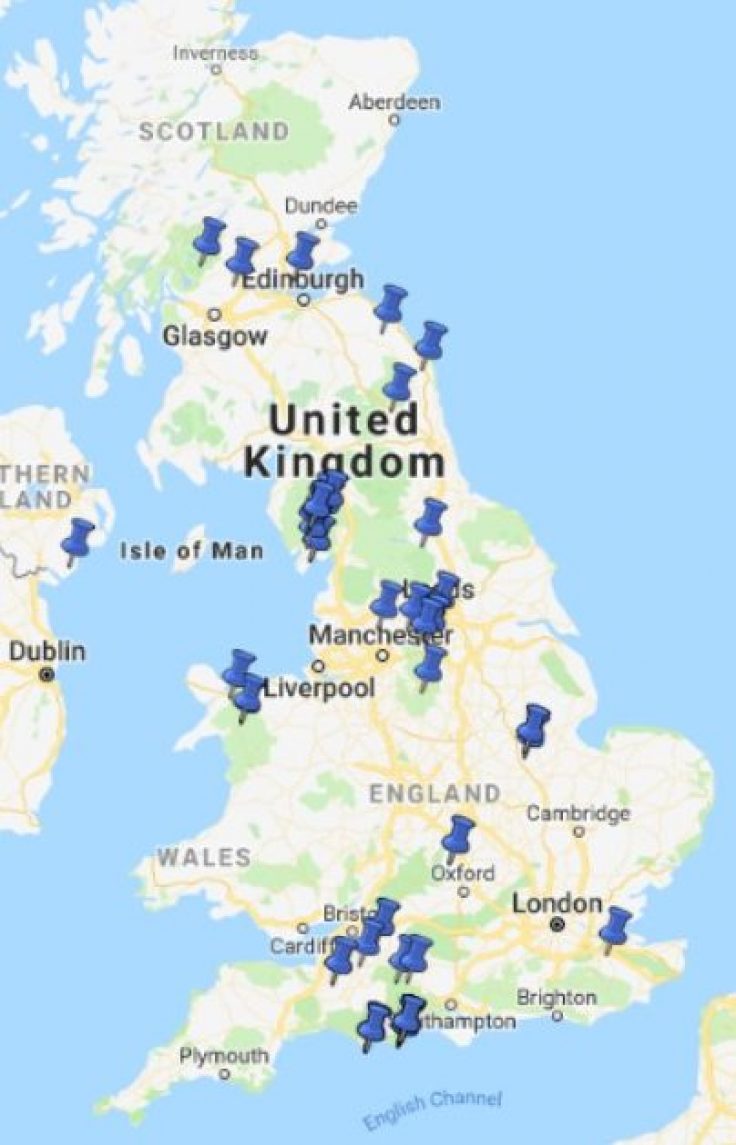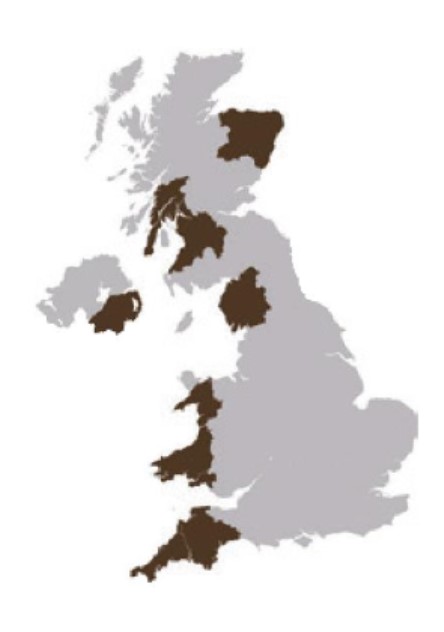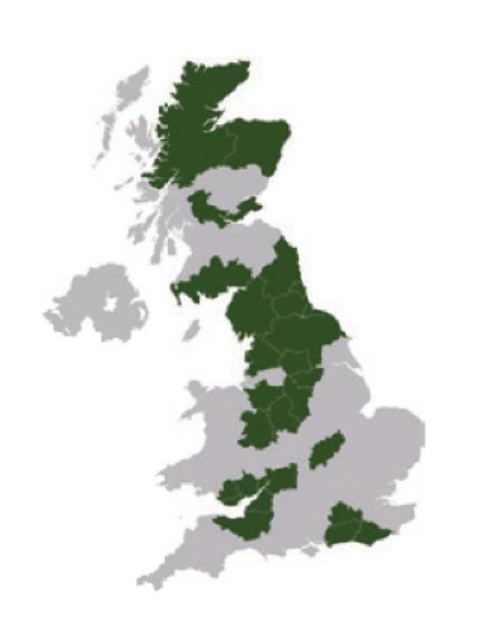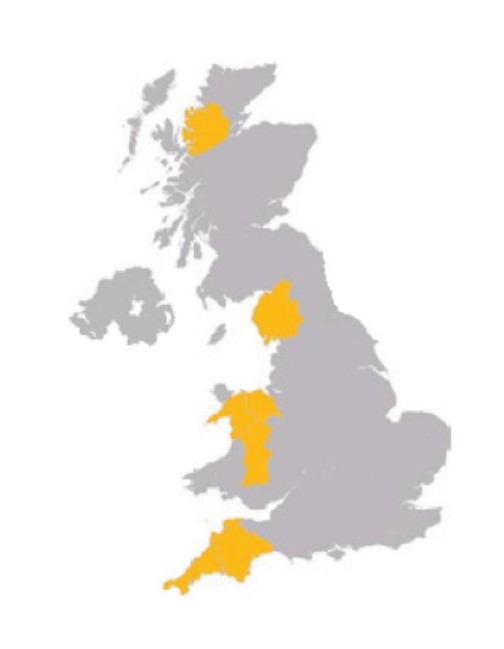
Limestone

Perhaps the most widely used type of natural stone, Limestone comes in a range of geological forms. It occurs naturally in many parts of the UK but the main belt runs from Dorset and Somerset in the South West, through to the Cotswolds and Oxfordshire and then on into Northamptonshire, Lincolnshire and north of the Humber.
Limestone is a sedimentary rock composed primarily of calcium carbonate. Limestone’s durability means that it lends itself to a wide array of applications from cladding to internal flooring.
Granite

This igneous rock is quarried in a small number of locations in the UK. Devon, Cornwall, Gwynedd, Aberdeen and Peterhead are all home to naturally occurring sources of Granite.
Granite is formed by the slow crystallisation of the minerals including quartz, feldspar and mica from molten materials, this provides a wide variety of colours and grain patterns. The flashes of colour within Granite provides depth and this quality is further enhanced when a full polish is applied.
The interlocking crystal structure imparts both high strength and low water absorption, necessary for a wide range of applications, which makes it ideal not only for cladding and paving but as a plinth course.
Sandstone

Sandstone often refers to stones of sedimentary origin with a granular texture and traditionally has been heavily used in the areas surrounding the quarry locations. Many of the ‘stone cities’ of Northern England had gained their name due to the heavy use of sandstone in the local architecture.
Sandstone is a clastic sedimentary rock made up on various mineral particles, mainly quartz, mica and feldspar. The individual make-up of each sandstone gives a wide range of colours including whites, browns, greys and reds. The high strength properties of sandstone make them suitable for high use areas, especially paving.
Slate

Slate is a stone found mainly in Cornwall, North Wales, the Scottish Highlands and the Lake District and has, for centuries, been a major source of building stone. True slate is defined by the presence of a ‘slaty’ cleavage; this allows the slate to split parallel to the cleavage plane.
Slate is a fine-grained, foliated metamorphic rock that is created by the alteration of shale, ash or mudstone by regional metamorphism. It is composed mainly of clay minerals or micas but can also contain quartz, small amounts of feldspar, calcite, pyrite and hematite.
Slates typically have high strength and low water absorption making them very easy to maintain, and therefore can be used in a variety of applications including flooring, cladding and roofing.
To start your search for indigenous British Stone, go to bit.ly/BritStone.

